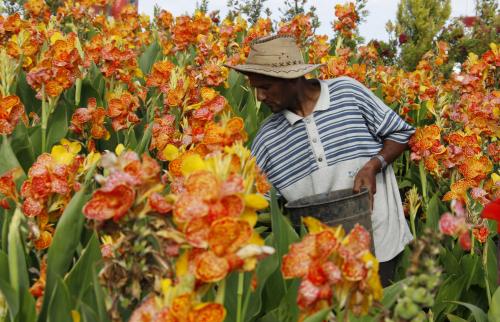As the 28th African Union (AU) Summit of Heads of State and Government opened in Ethiopia on Monday, January 30, leaders responded to a recent executive order issued by U.S. President Donald Trump, which is directed at citizens of seven predominantly Muslim countries—including three in Africa: Libya, Somalia, and Sudan. According to the presidential action, nationals from these “countries of particular concern” will be barred entry to the U.S. for 90 days. The order also suspends refugee admissions from all countries for 120 days.
Several leaders attending the summit expressed concern over the executive order. Outgoing AU Commission Chair Nkosazana Dlamini-Zuma called the decision “one of the greatest challenges to our unity and solidarity.” Sudan’s Foreign Minister Ibrahim Ghandour expressed disappointment that the decision comes into effect just two weeks after the U.S. lifted sanctions on Sudan, but also stated, “We’ll wait until the period mentioned, until the executive decision passes and see what is next after that and then we’ll act accordingly.” For his part, U.N. Secretary-General António Guterres commended African countries because, in his words, “African borders remain open for those in need of protection when so many borders are being closed.”
Indeed, Figure 1 (below) from chapter six of Foresight Africa 2017 indicates that the majority of the world’s refugees both come from and are hosted by countries in sub-Saharan Africa and the Middle East and North Africa. The latest country-level data from the U.N. Refugee Agency’s (UNHCR) Global Trends 2015 report show that the top source countries of refugees in 2015 were the Syrian Arabic Republic (4.9 million), Afghanistan (2.7 million), Somalia (1.1 million), South Sudan (0.8 million), and Sudan (0.6 million). Meanwhile, the top refugee-hosting countries were Turkey (2.5 million), Pakistan (1.6 million), Lebanon (1.1 million), the Islamic Republic of Iran (1.0 million), and Ethiopia (0.7 million). As seen in Figure 1, sub-Saharan Africa hosts over 20 percent of the world’s refugees.
 Brookings Senior Fellow Beth Ferris notes in a recent blog post that President Trump’s executive order might affect policies in African countries and elsewhere. As Ferris asks, “If U.S. refugee policy excludes those fleeing violence in Muslim majority countries, why shouldn’t other countries impose similar exclusions? If future U.S. refugee policy is based on a narrow implementation of ‘America First,’ why should Lebanon or Tanzania or a hundred other countries continue to receive refugees?”
Brookings Senior Fellow Beth Ferris notes in a recent blog post that President Trump’s executive order might affect policies in African countries and elsewhere. As Ferris asks, “If U.S. refugee policy excludes those fleeing violence in Muslim majority countries, why shouldn’t other countries impose similar exclusions? If future U.S. refugee policy is based on a narrow implementation of ‘America First,’ why should Lebanon or Tanzania or a hundred other countries continue to receive refugees?”
For more insight into the global implications of the presidential action, check out other Brookings posts on migrants, refugees, and internally displaced persons. Alternatively, for more analysis on issues related to African governance, see chapter six of the Foresight Africa 2017 report.






Commentary
Figures of the week: Refugee flows from and within Africa
February 3, 2017